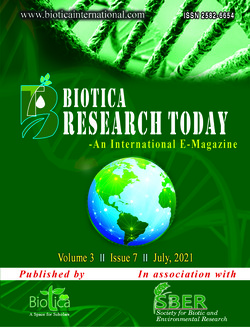
Biofloc: Floc Types and Their Importance in Aquaculture
Nethaji, M.*
Dr. M.G.R. Fisheries College and Research Institute, Ponneri, Tamil Nadu, Dr. J Jayalalithaa Fisheries University, Tamil Nadu (601 204), India
Ahilan, B.
Dr. M.G.R. Fisheries College and Research Institute, Ponneri, Tamil Nadu, Dr. J Jayalalithaa Fisheries University, Tamil Nadu (601 204), India
Ravaneswaran, K.
ARTP, Dr. M.G.R. Fisheries College and Research Institute, Ponneri, Tamil Nadu, Dr. J Jayalalithaa Fisheries University, Tamil Nadu (601 204), India
Tamilarasu, A.
Dr. M.G.R. Fisheries College and Research Institute, Ponneri, Tamil Nadu, Dr. J Jayalalithaa Fisheries University, Tamil Nadu (601 204), India
Mahadevi, N.
ARFF, Dr. M.G.R. Fisheries College and Research Institute, Ponneri, Tamil Nadu, Dr. J Jayalalithaa Fisheries University, Tamil Nadu (601 204), India
Somu Sunder Lingam, R.
Krishnagiri-Barur Centre for Sustainable Aquaculture, Barur, Krishnagiri, Tamil Nadu, Dr. J Jayalalithaa Fisheries University, Tamil Nadu (635 201), India
DOI: NIL
Keywords: Aquaculture, Biofloc, Microorganism, Nutrient
Abstract
Biofloc is an emerging alternative system to recycle and reuse the nutrients in the aquaculture system. The sustainable approach of such a system depends on the size of the floc and its properties in the culture system, mainly consist of the beneficial heterotrophic microbial community. Therefore, the microorganism maintains the water quality by maintaining the uptake of nitrogen compounds and increases the nutrient availability in the culture which reduces the feed conversion ratio and reduces the feed cost. The article discusses the properties of floc and its types in the culture system, in brief.
Downloads
not found
Reference
Emerenciano, M., Gaxiola, G., Cuzon, G., 2013. Biofloc technology (BFT): a review for aquaculture application and animal food industry. Biomass now-cultivation and utilization, pp. 301-328.
Jarvis, P., Jefferson, B., Greygory, P., Parsons, S, A., 2005. A Review of Floc Strength and Breakage. Water Research 39(14), 3121-3137.
Jenkins, D., Richard, M. G., Daigger, G. T., 2003. Manual on the causes and control of activated sludge, bulking, foaming and other solids separation problems (3rd Edition), Lewis Publishers, pp. 1-224.
